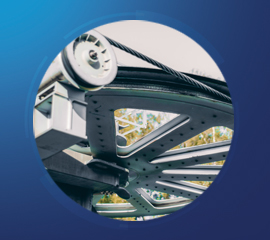Compressor Oils

HYCOM TURBO SYN
Special Features
Available in ISO 46, 68 and 100 viscosity grades, HYCOM TURBO SYN fluids are formulated from synthetic hydrocarbon fluids (PAO’s) combined with the latest additive technology and can offer :
- Extended Oil Life
Longer fluid life means reduced servicing, less down time and improved cost effectiveness
- Reduced Air Separator Blocking
These fluids have been formulated with particular attention to good air separator performance
- Good Compatibility with seals and Paints
Compatibility equivalent to the best mineral oil means these fluids can be introduced into compressors with complete confidence and no added cost of change over.
- Total Compatibility with Polycarbonate filter Bowls:
- Increased Oxidation Protection:
Resistance to oxidation means longer fluid life, fewer oil changes and reduction of servicing costs
- Excellent Viscosity Temperature Characteristics:
These fluids are formulated to give the correct viscosity at the temperature of operation. At low temperature they are less viscous than conventional fluids providing easier start up and reduced energy consumption. At high temperature they are more viscous and provide better lubrication and wear control
- Excellent Wear Protection:
Synthetic hydrocarbon fluids show an excellent response to advise and give wear protection superior to mineral oils.
- Excellent Separation from Air & Water:
Rapid separation of air and water means more effective compressor operation and reduced fluid contamination giving long life.
- Very Low Carbon Forming Tendencies:
Very low “Pneurup Oxidation Test” values means reduced valve servicing and safer compressor operations.
- High Flash Point and Low Volatility:
Reduced oil consumption and lower oil carry over means cheaper, cleaner operation.
- Better Corrosion Protection:
Corrosion protection better than mineral oil lubricants means longer equipment life and better protection for the total air system.
- Improved performance as compared to Ester based Lubricants:
In the presence of Iron & water catalysts there is no significant hydrolysis of HYCOM TURBO SYN 68, however traditional ester & diester lubricants undergo significant deterioration.
Physico-chemical properties
| HYCOM TURBO | ||||
|---|---|---|---|---|
| SYN 32 | SYN 46 | SYN 68 | SYN 100 | |
| Kinematic Viscosity @ 100°C | 5.8 | 7.3 | 10.2 | 13.1 |
| Kinematic Viscosity @ 40°C | 32 | 46 | 68 | 100 |
| Viscosity Index | 135 | 135 | 135 | 135 |
| Density @ 20°C | 0.85 | 0.85 | 0.855 | 0.86 |
| Pour Point, °C | -51 | -40 | -40 | -36 |
| Flash Point, COC, °C | 230 | 240 | 245 | 248 |
| Foam Tendency | Trace (Nil) | Trace (Nil) | Trace (Nil) | Trace (Nil) |
| Demulsibility (ASTM D 1401) | 40-40-0 in less than 15 minutes | 40-40-0 in less than 20 minutes | 40-40-0 in 21 minutes | 40-40-0 in 22 minutes |
| Appearance | Clear | Clear | Clear | Clear |
| FZG Test (A/8.3/90) | 12 pass | 12 pass | 12 pass | 12 pass |
Extended Oil Life
For a Compressor lubricant to perform its correct function over extended periods of operation it must have
- Increased oxidation protection
- Superior thermal stability
- Good Air separator performance
- Low Carbon forming tendencies
OXIDATION PROTECTION
With particular reference to oil flooded rotary compressors a modified DIN 51352 test has been developed which simulates the vigorous mixing of oil and air under conditions of catalytic oxidation. For the most severe duty applications, 500 hours at 120°C are used as the test conditions and the oil is analysed for sludge content, acidity increase and viscosity increase.
| ISO VG | |||
|---|---|---|---|
| 46 | 68 | 100 | |
| KV 40 % Increase | 2.8 | 2.7 | 2.4 |
| Sludge wt.% | 0.07 | 0.05 | 0.08 |
| TAN Increase | 0.21 | 0.24 | 0.20 |
Under these very severe conditions all four fluids show excellent retention of their original properties. Sludge formation is very low even after 500 hours and it is widely believed that this correlates with good performance in oil-air separators.
AIR SEPARATOR PERFORMANCE
Air separator performance can be partly related to the cleanliness of the intake air, it can also be seriously affected by the quality of the lubricants. Synthetic compressor fluids based on PAO can be formulated to give excellent performance in air oil separators. This is a very important aspect of performance and not only costs money in terms of servicing and replacement filters but also contributes to downtime and production costs.
HPCL has measured the rate of filtration for compressor oils before and after an ageing test (at 120ºC for 1 week) and compared the performance with oils of known field service history. Filtration is carried out using 1.2 µ filter and the time (in mins) is recorded for 300 ml oil to be filtered.
| HYCOM TURBO | Mineral Compressor Oil 100 | ||
|---|---|---|---|
| SYN 68 | A (ISO 32) | B (ISO 32) | |
| New Oil | 13.0 | 16.7 | 14.0 |
| Aged Oil | 14.7 | 56 | Blocked |
| Ratio (aged/new) | 1.13 | 3.4 | - |
Oil B is known to have air separator blocking problems and performs poorly in this test. Oil A gives acceptable performance for normal oil drain intervals.
THERMAL STABILITY
One of the tests used for evaluating thermal stability of lubricants is a ‘hot oil oxidation test’, and this is commonly used for both automotive and industrial oils. It consists of passing air through the oil at 165ºC in the presence of a soluble iron catalyst. Acidity of the oil is measured regularly to monitor the condition of the oil.
Under these very severe conditions of temperature all four fluids are stable and show excellent resistance to oxidation. Esters and mineral oils show a tendency to early breakdown, forming acids which can be corrosive and detrimental to the compressor and the downstream airline system.
LOW CARBON FORMING TENDENCIES
For synthetic compressor oils to have the widest market acceptance they must be capable of giving superior performance in all types of compressors. This must include reciprocating compressors where the carbon forming tendencies of the lubricant are of the greatest importance.
Under conditions of very high temperatures some lubricants can form carbon deposits of residues. Not only do these deposits limit the operation of the valves inside the air compressor and require regular servicing, but on prolonged exposure to severe conditions of temperature and pressure these deposits can start to flow red hot, causing fires and explosions within the compressed air system.
The DIN 51506 specification was designed to assess this aspect of performance using the PNEUROP oxidation test (DIN 51352) which evaluates the carbon forming tendency of an oil after a period of oxidation using an iron oxide catalyst. In addition to the PNEUROP oxidation test, for the highest performance oils a distillation is performed and the carbon forming tendency of the 20 % residue is assessed. This ensures that as the oil evaporates from any ‘hot spots’ a dangerous residue is not left behind.
| HYCOM TURBO SYN 68 | |
|---|---|
| *PNEUROP OXIDATION TEST | |
| % Carbon after ageing | 0.12 |
| 20 % Distillation residue - % Carbon | Nil |
The above results show excellent resistance to oxidation and carbon formation. Even the residue left behind after evaporating off most of the lubricant shows little or no tendency to form carbon.
Compressor Oils

Cylinder Oil
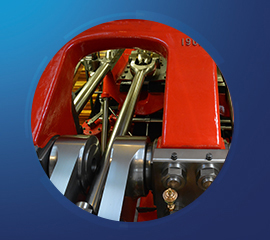
Film Oils & Steel Mill Bearing Oils

General Purpose Machinery Oils

Hydraulic Oils

Industrial Gear Oils

Machineway Oils
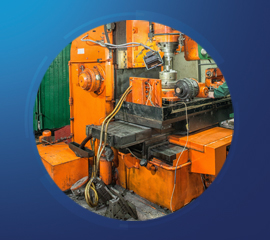
Open Gear Compounds

Pneumatic Tool Oils

Refrigeration Compressor Oils

Spindle Oils
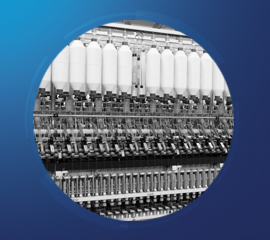
Stenter Oils
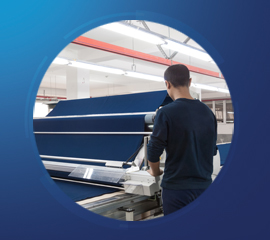
Sugar Mill Bearing Oils

Transformer Oils
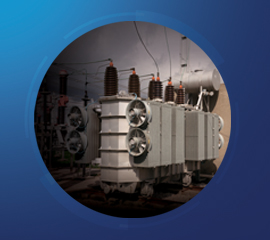
Turbine Oils

Wire Rope Lubricants
